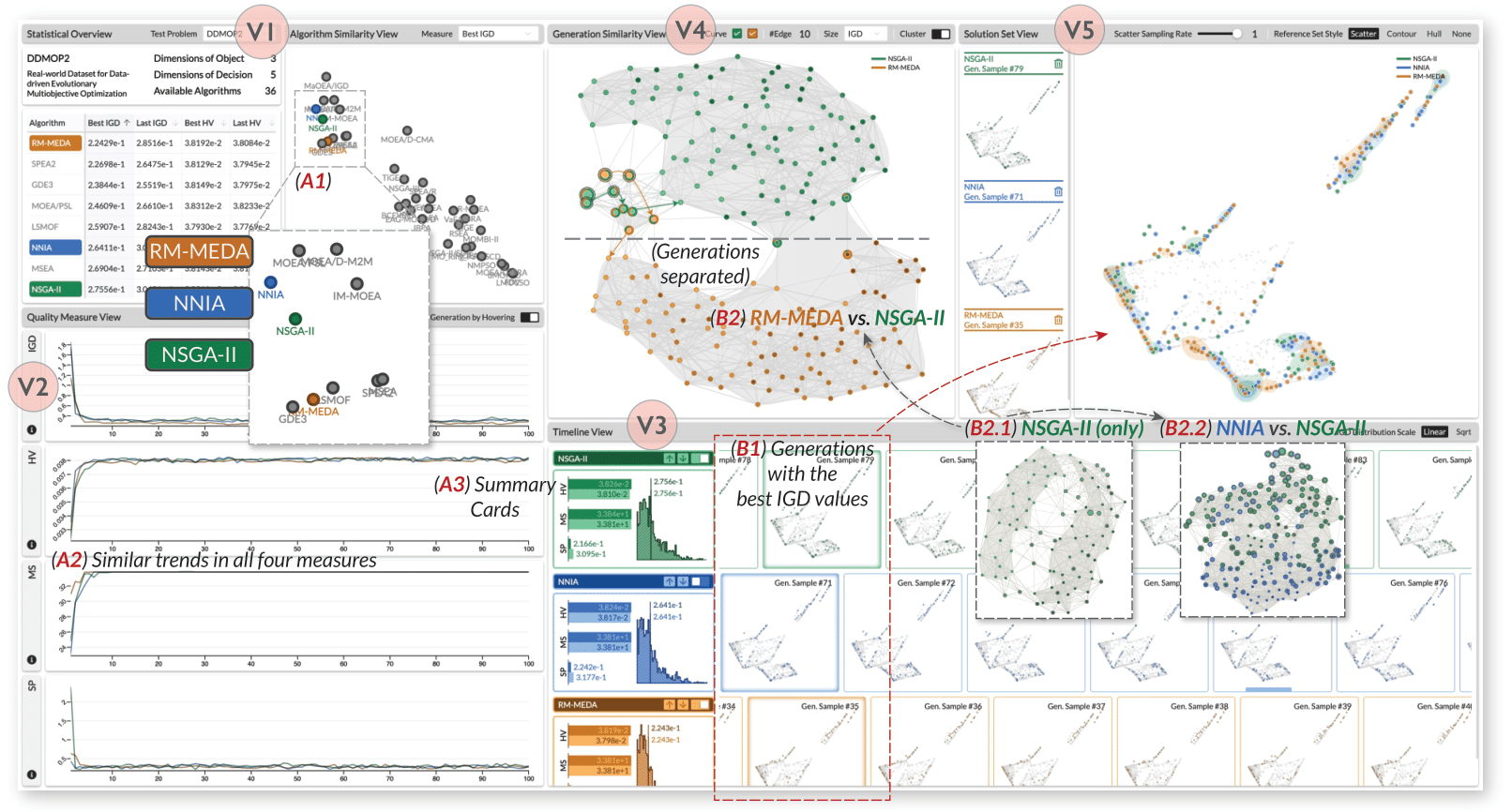A Comparative Visual Analytics Framework for Evaluating Evolutionary Processes in Multi-objective Optimization
Yansong Huang, Zherui Zhang, Ao Jiao, Yuxin Ma, Ran Cheng
DOI: 10.1109/TVCG.2023.3326921
Room: 109
2023-10-25T04:45:00ZGMT-0600Change your timezone on the schedule page
2023-10-25T04:45:00Z

Fast forward
Full Video
Keywords
Visual analytics, evolutionary multi-objective optimization
Abstract
Evolutionary multi-objective optimization (EMO) algorithms have been demonstrated to be effective in solving multi-criteria decision-making problems. In real-world applications, analysts often employ several algorithms concurrently and compare their solution sets to gain insight into the characteristics of different algorithms and explore a broader range of feasible solutions. However, EMO algorithms are typically treated as black boxes, leading to difficulties in performing detailed analysis and comparisons between the internal evolutionary processes. Inspired by the successful application of visual analytics tools in explainable AI, we argue that interactive visualization can significantly enhance the comparative analysis between multiple EMO algorithms. In this paper, we present a visual analytics framework that enables the exploration and comparison of evolutionary processes in EMO algorithms. Guided by a literature review and expert interviews, the proposed framework addresses various analytical tasks and establishes a multi-faceted visualization design to support the comparative analysis of intermediate generations in the evolution as well as solution sets. We demonstrate the effectiveness of our framework through case studies on benchmarking and real-world multi-objective optimization problems to elucidate how analysts can leverage our framework to inspect and compare diverse algorithms.